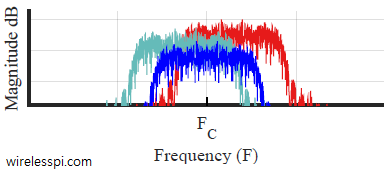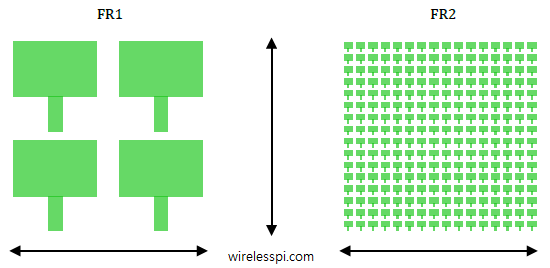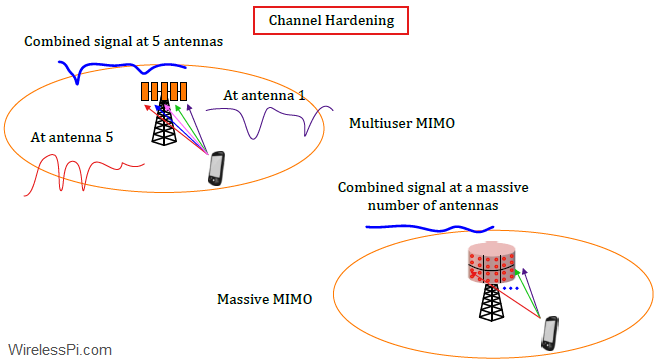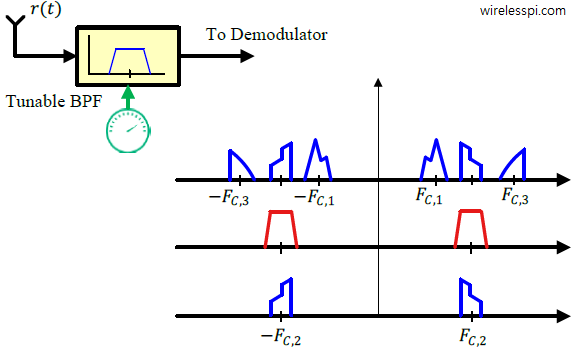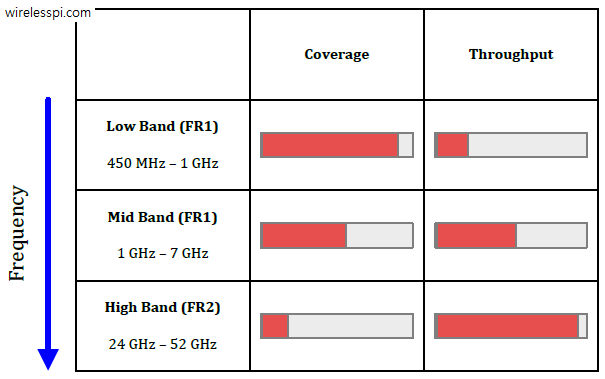We discussed the idea of fading in wireless channels in a previous article. To understand different types of fading in the context of time variations, refer to the figure below that shows a multipath channel. Slow Fading A slow motion scenario is illustrated in the figure below where three multipath components are arriving with Doppler shifts $F_{D,i}$ from the carrier frequency. In this scenario, the magnitudes of $F_{D,i}$ are small and hence observe very little spreading of the cumulative spectrum. This can be understood by recalling that when two sinusoids with two different frequencies $F_1$ and $F_2$ are added, the
Continue reading